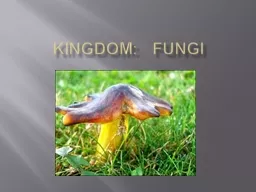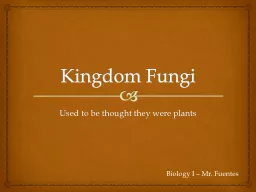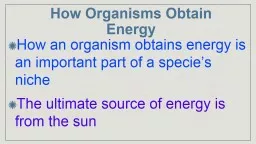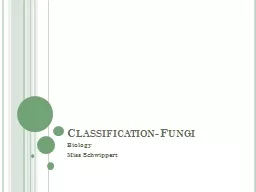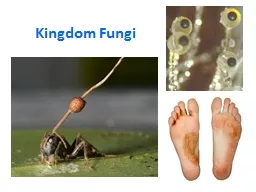PPT-Kingdom: fungi Fungi are multicellular heterotrophs that feed by absorption
Author : luanne-stotts | Published Date : 2020-04-03
Fungi secrete hydrolytic enzymes digest food outside their bodies and absorb small molecules Structure of Fungi Cell walls are made of chitin Bodies are composed
Presentation Embed Code
Download Presentation
Download Presentation The PPT/PDF document " Kingdom: fungi Fungi are multicellular..." is the property of its rightful owner. Permission is granted to download and print the materials on this website for personal, non-commercial use only, and to display it on your personal computer provided you do not modify the materials and that you retain all copyright notices contained in the materials. By downloading content from our website, you accept the terms of this agreement.
Kingdom: fungi Fungi are multicellular heterotrophs that feed by absorption: Transcript
Download Rules Of Document
" Kingdom: fungi Fungi are multicellular heterotrophs that feed by absorption"The content belongs to its owner. You may download and print it for personal use, without modification, and keep all copyright notices. By downloading, you agree to these terms.
Related Documents

